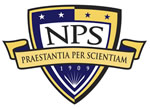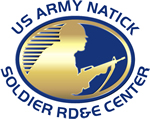About Us - Aerodynamic Decelerator Systems Laboratory
About Us



In 2001, the ADSC at NPS was established by the three parties
- the U.S. Army Soldier and Biological Chemical Command (later renamed as the U.S. Army Natick Soldier Research, Development and Engineering Center (NSRDEC))
- the U.S. Army Yuma Proving Ground (YPG) and
- the Naval Postgraduate School (NPS)
The Memorandum of Understanding (MoU) these three parties signed back then set up a cooperative working relationship to identify and develop open technology areas and novel approaches/systems with maximum potential of providing critical improvements and new capabilities to Aerodynamic Decelerator Systems (ADS). In 2009 YPG and NPS renewed this relationship by signing a new Memorandum of Agreement (MOA). This MOA was renewed again in 2015. Also in 2015, ADSC was joined by the U.S. Army Armament Research, Development and Engineering Center (ARDEC). ADSC projects deal with:
- parachute and parafoil modeling
- instrumentation suite development
- parameter identification
- guidance, navigation and control algorithms design
- computer, hardware-in-the-loop and field testing
- development of the standalone graphical user interfaces to support different YPG missions
- fusion of EO and IR sensor streams for real-time non-contrast feature detection
- modeling and development of fixed- and rotary-wing unmanned platforms for reconnaissance and surveillance missions
- investigation of performance of an integrated INS/GPS system of a specific vehicle in a controlled and repeatable environment (emulating different settings of the GPS constellation, INS sensors error, and vehicle dynamics)
- developing a system for autonomous locking on and tracking of ADS and UAV trajectory reconstruction/analysis based on visual data provided by multiple stationary cameras
- trajectory reconstruction/analysis based on data provided by onboard sensors
- high-fidelity modeling of weapon systems
- usage of powered and unpowered UAV and ADS in littoral operations
- multiple UAV and ADS networking and collaborative control
The success of these projects was only possible because of the hard work of students and faculty of several universities, backed by the Consortium for Robotics and Unmanned Systems Education and Research (CRUSER), YPG, ARDEC, and NSRDEC.

